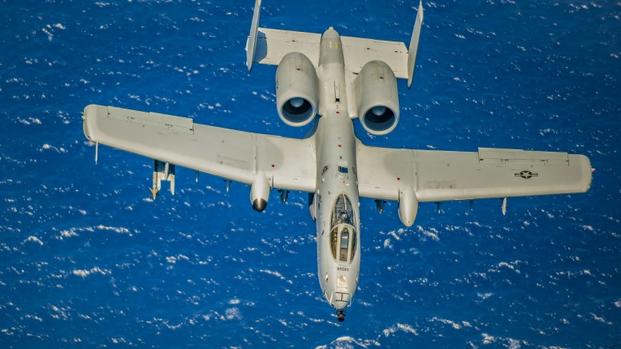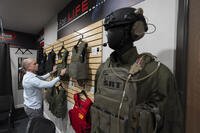A pair of Air Force Academy cadets selected for pilot training are not only preparing for their day in the cockpit -- they're also looking to boost the performance and lethality of the A-10 Warthog.
Cadets 1st Class Jon Clegg and John Potthoff have been working at the academy "to research decreasing maintenance requirements and increase munitions capability," according to a service release.
"We're working together to investigate replacing the existing leading-edge slat system with a fixed leading-edge droop to reduce complexity on this important aircraft," Potthoff said in the release.
Dr. Thomas Yechout, their aeronautics professor, is assisting with the research. Yechout said the leading-edge slat system "uses a gap to accelerate airflow during flight." However, a leading-edge droop may reduce engine stalls, possibly translating into lower maintenance costs and more available aircraft, he said.
Related content:
- A-10 'Brrrts' Another Retirement Volley: Here's What's Next
- Air Force Mulls Cutting Three A-10 Squadrons
- Lawmakers Back $400 Million for Possible A-10 Successor
But the cadets not only want to produce a smoother flight -- they want to strap more rockets to the Fairchild Republic-made Thunderbolt II.
The A-10 is a Cold War-era ground-attack plane known for its iconic gun designed to shred tanks and its tough titanium armor designed to take hits and keep flying.
Clegg and Potthoff believe the A-10 can carry more munitions if the number of pods that carry rockets could be increased.
"Their tasking was for us to evaluate and define the aerodynamic effects and the performance implications of tripling the number of rocket pods," Yechout said. "This included assessing the changes in aircraft range, endurance and maximum speed."
Air Force leaders have repeatedly said the A-10 -- one of the leading aircraft in the fight against the Islamic State in Iraq and Syria -- will remain in the service "indefinitely."
But while many an A-10 enthusiast would like to see the planes flying "indefinitely," the Air Force more likely means "into the foreseeable future."
The argument to keep the close-air-support mission aircraft -- for now -- is due to pressure from congressional members such as Arizona Republicans Sen. John McCain, a former Navy pilot, and Rep. Martha McSally, who flew A-10s during her Air Force career.
The service -- facing financial pressure driven by spending caps known as sequestration -- made multiple attempts in recent years to retire the Warthog to save an estimated $4 billion over five years and to free up maintainers for the F-35 Joint Strike Fighter, the stealthy fifth-generation fighter jet designed to replace the A-10 and legacy fighters.
In September, Gen. Ellen Pawlikowski, commander of Air Force Materiel Command, told Defense News that if the A-10 fleet does not receive new wings before the service life of the current wings runs out, some squadrons will begin retiring.
Clegg and Potthoff profess they have solutions for the platform as a whole.
Last year, the cadets conducted analyses on an A-10 Thunderbolt stripped for a maintenance overhaul at Hill Air Force Base, Utah.
"I was able to perform analyses on real-world problems and see how my work has the potential to impact those on the operational side," Clegg said.
Clegg and Potthoff first presented their research to the A-10 special projects office program manager and staff last May and will give a new presentation in January, Potthoff said.
"We may have an entirely new project after the January briefing," he said. "One thing is certain, we will continue to do research to support the A-10 and increase its combat capability."
The two cadets are scheduled to graduate in May, the release said.










